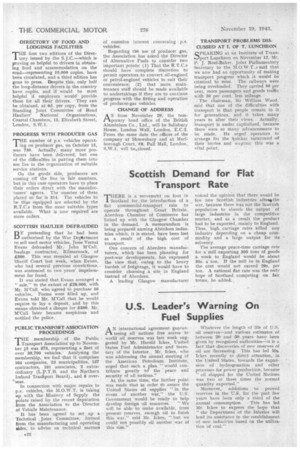Scottish Demand for Flat Transport Rate
Page 24

If you've noticed an error in this article please click here to report it so we can fix it.
'THERE is a movement on foot in I Scotland for, the introduction of a flat commercial-transport rate to operate throughout Great Britain. Aberdeen Chamber of Commerce has linked up with the Glasgow Chamber in the demand. A memorandum is being prepared naming Aberdeen industries which, it is stated, have been lost as a result of the high cost of transport.
One concern of Aberdeen manufacturers, whicb has been planning for post-war developments, has expressedthe view that, owing to the heavy burdett of freightage, it would have to consider choosing a site in England instead of Aberdeen.
A leading Glasgow manufacturer voiced the opinion that there would be few new Scottish industries afteeethe war, because there was not the Scottish population to absorb the output of large industries in the competitive market, and as a result the product had to be exported, mainly to England. Thus,' high carriage rates killed any industry depending on a cheap commodity and a large output for its solvency.
The average peace-time carriage rate for a mill exporting 300 tons of goods a week to England would be about 35s. a ton. If the mill be in England the cost would not exceed 20s. per ton. A national fiat rate was the only hope of Scotland competing on fair
terms, he added.. _




























































